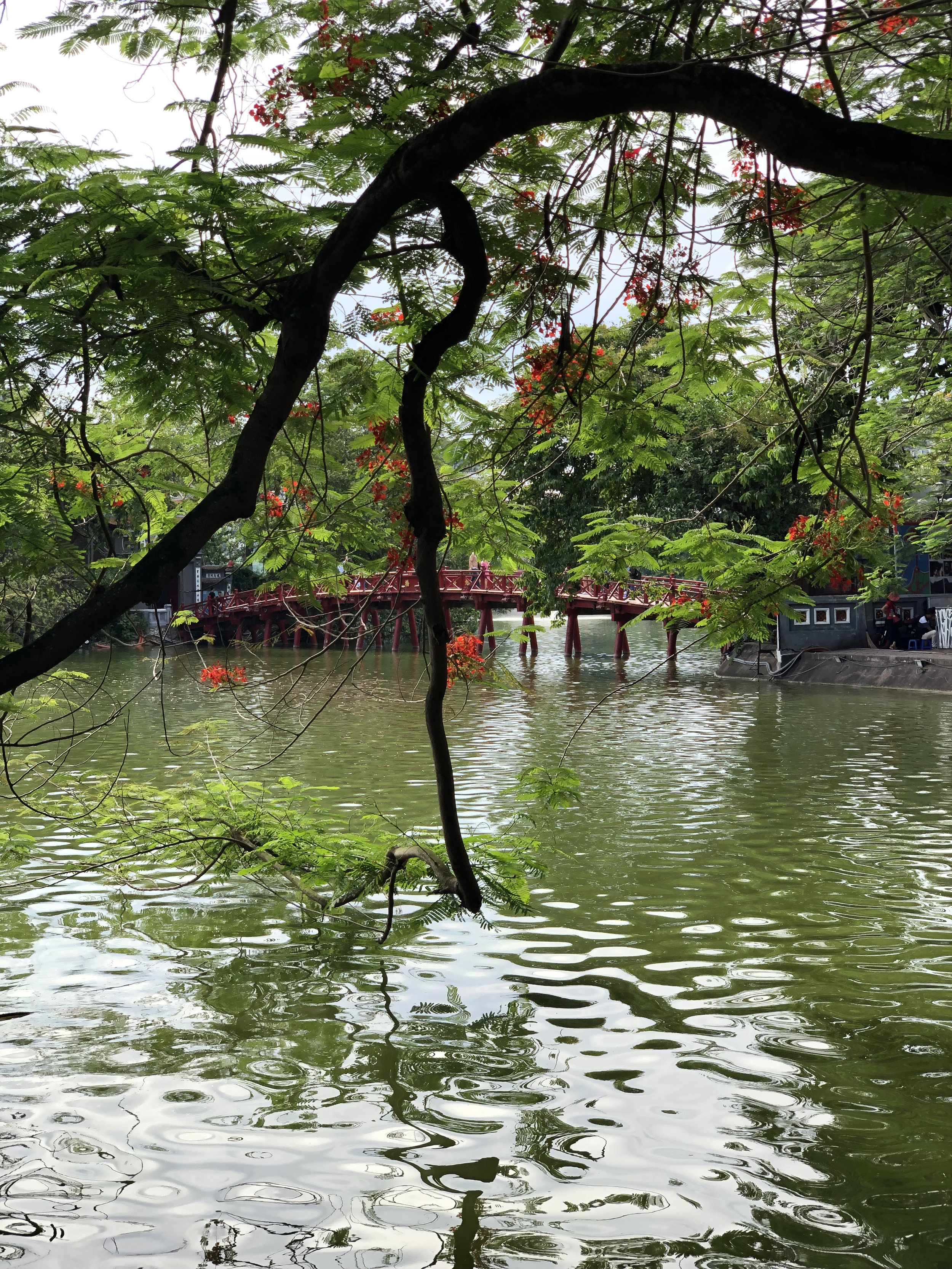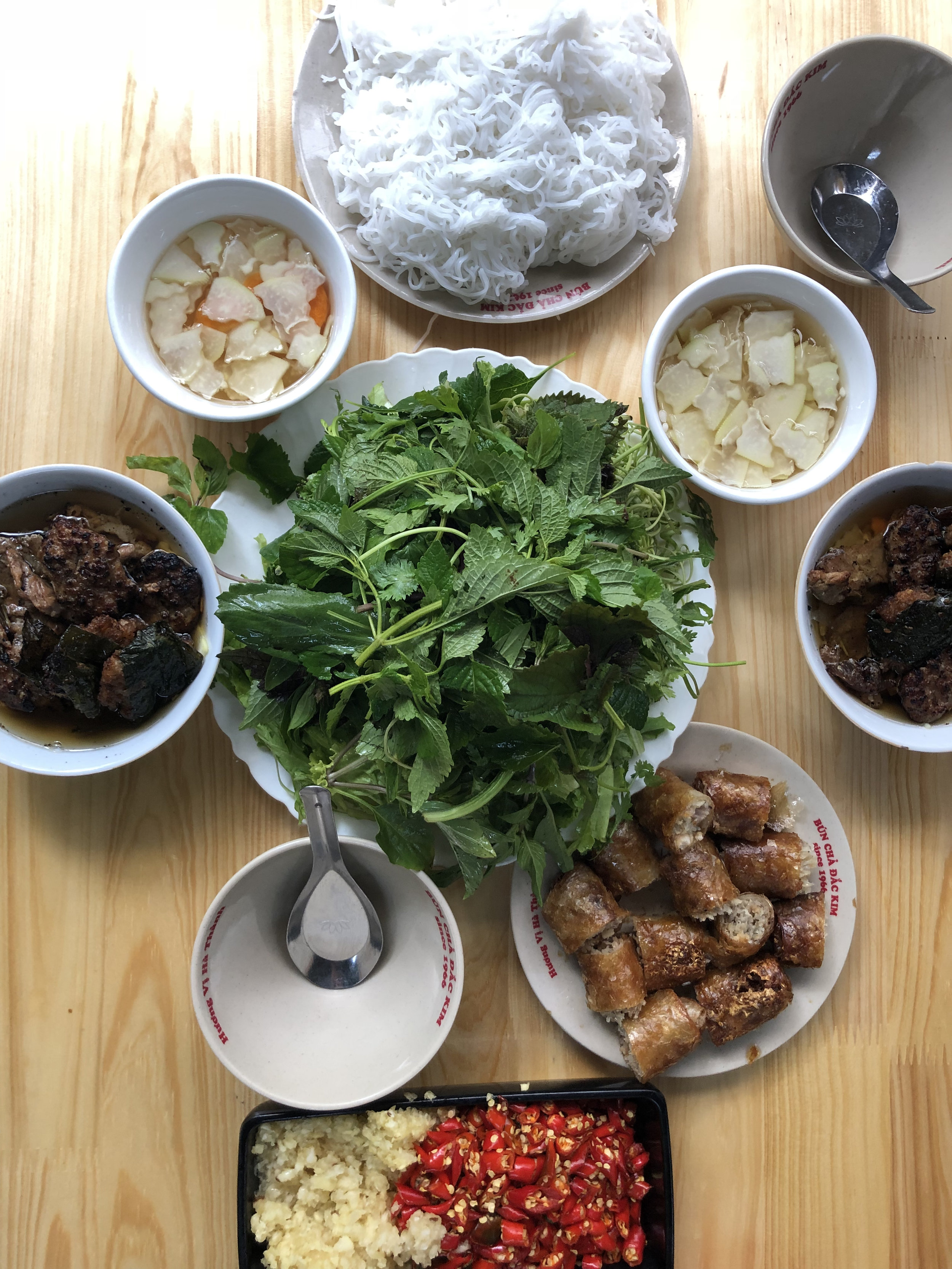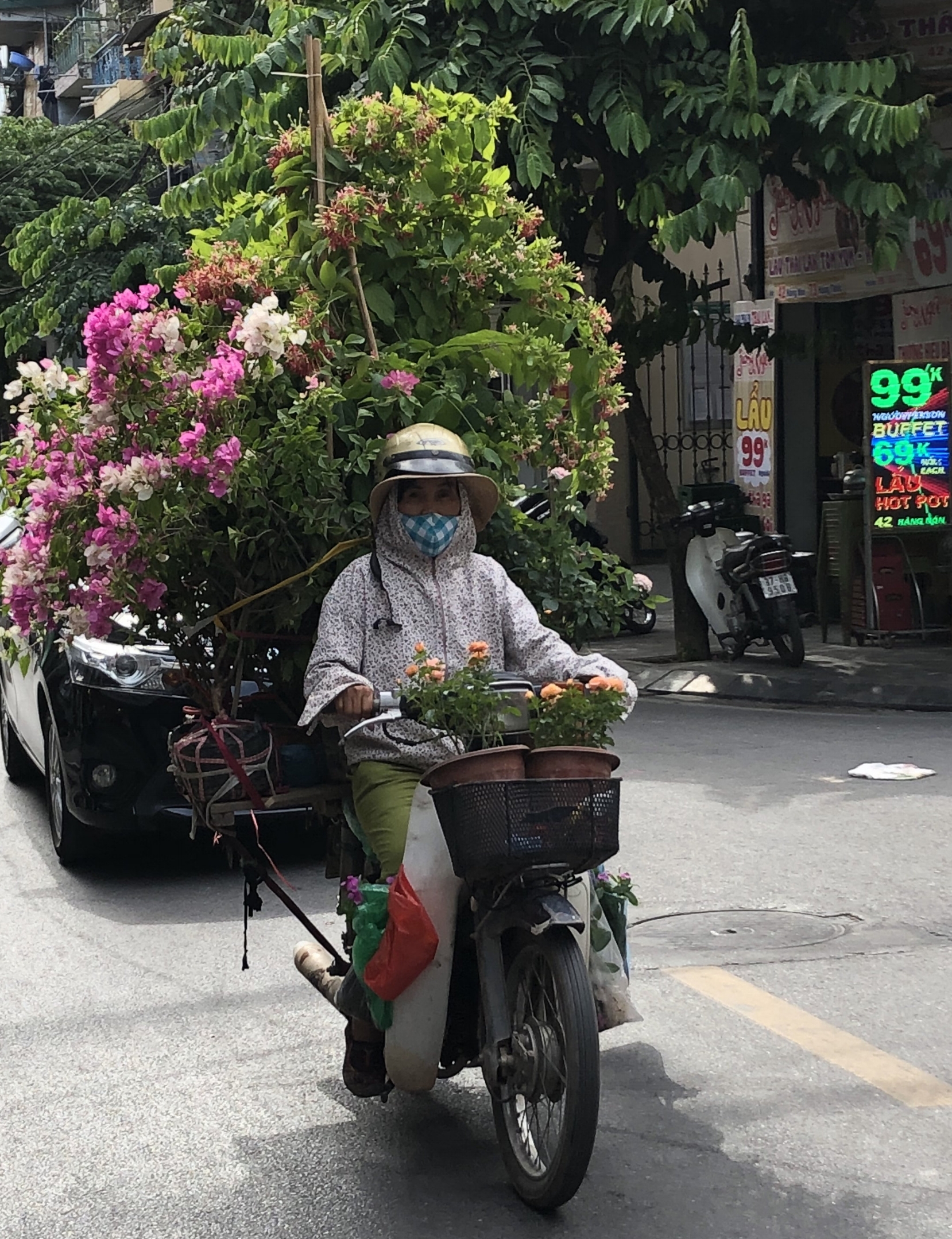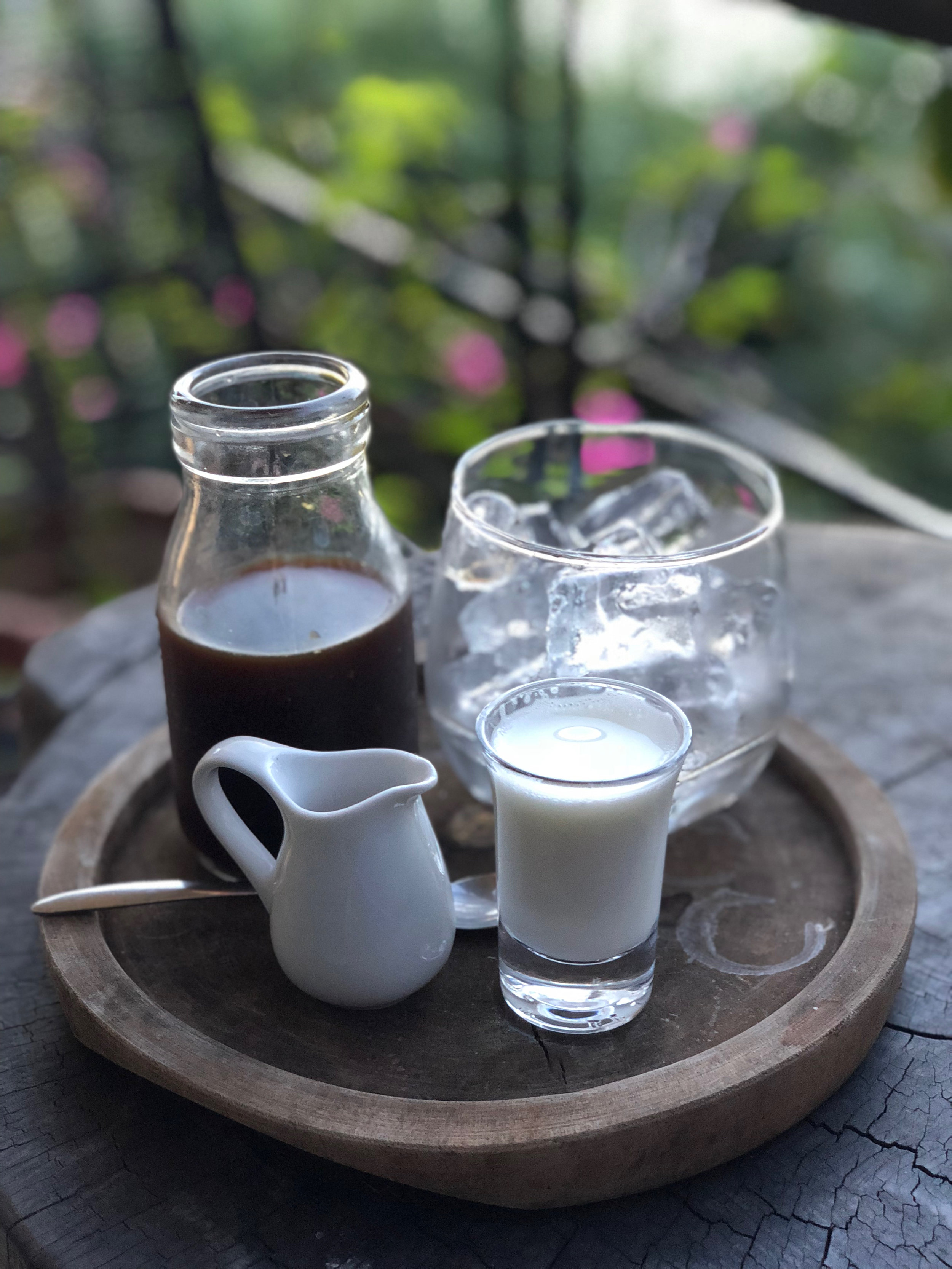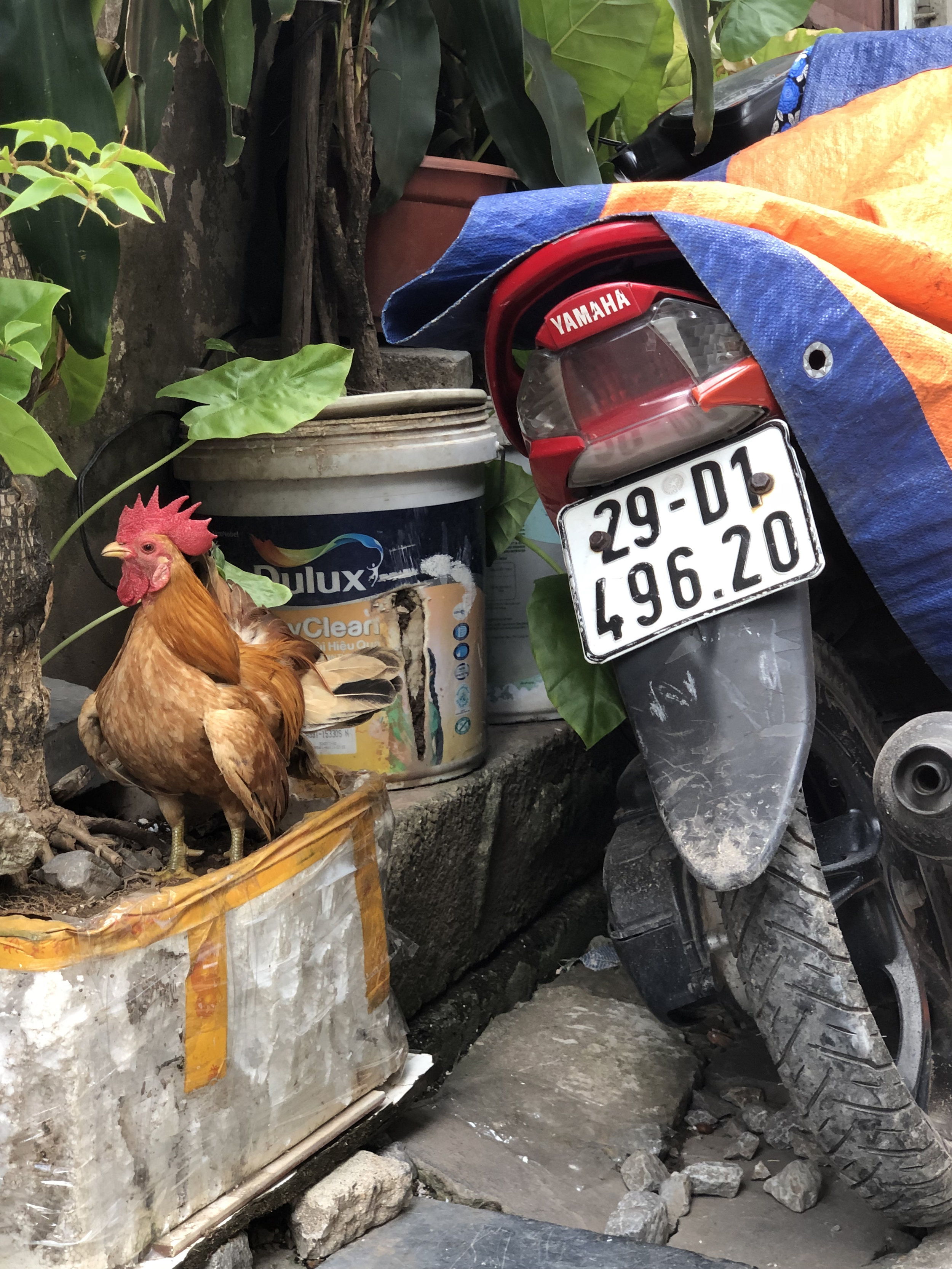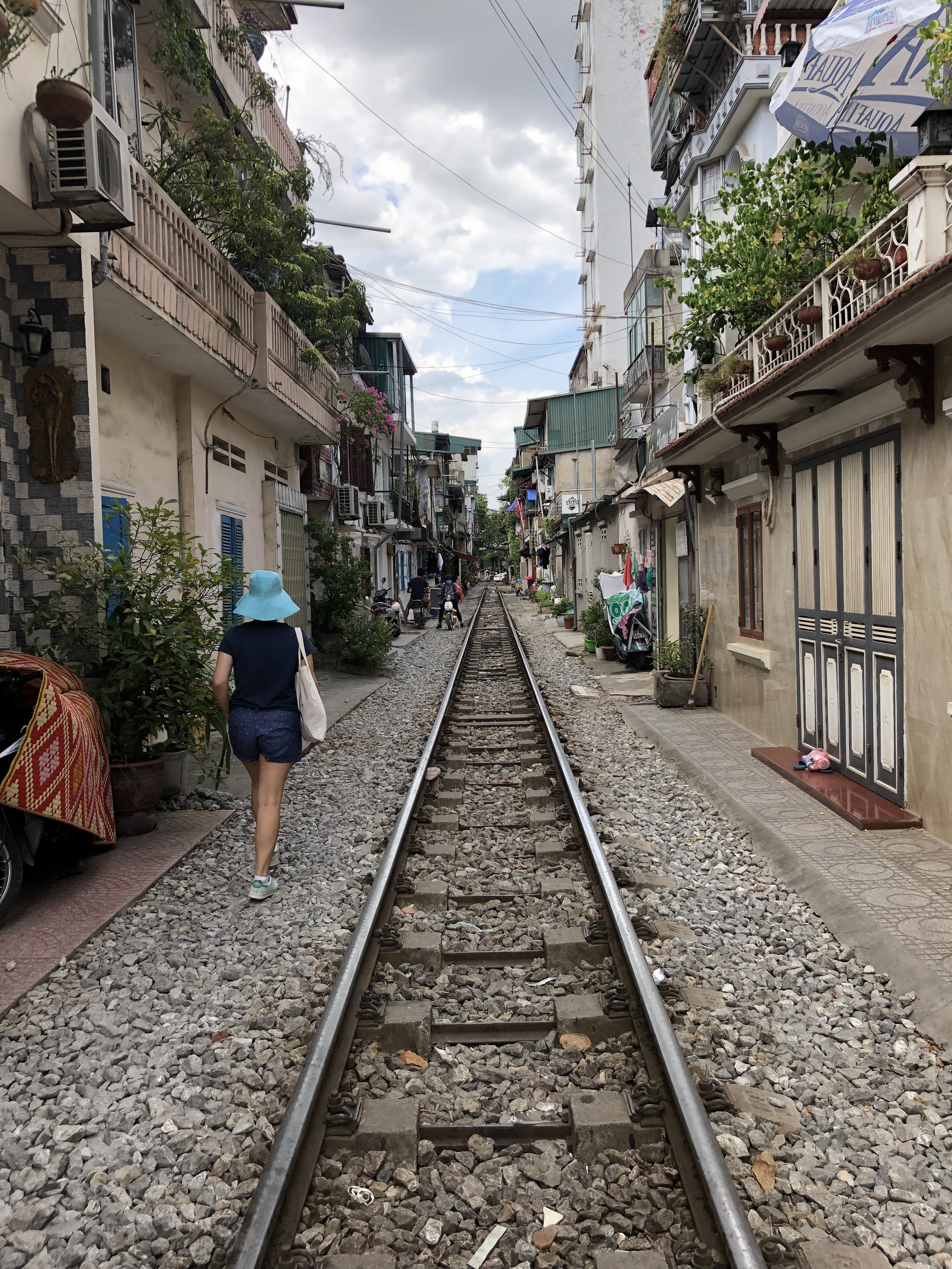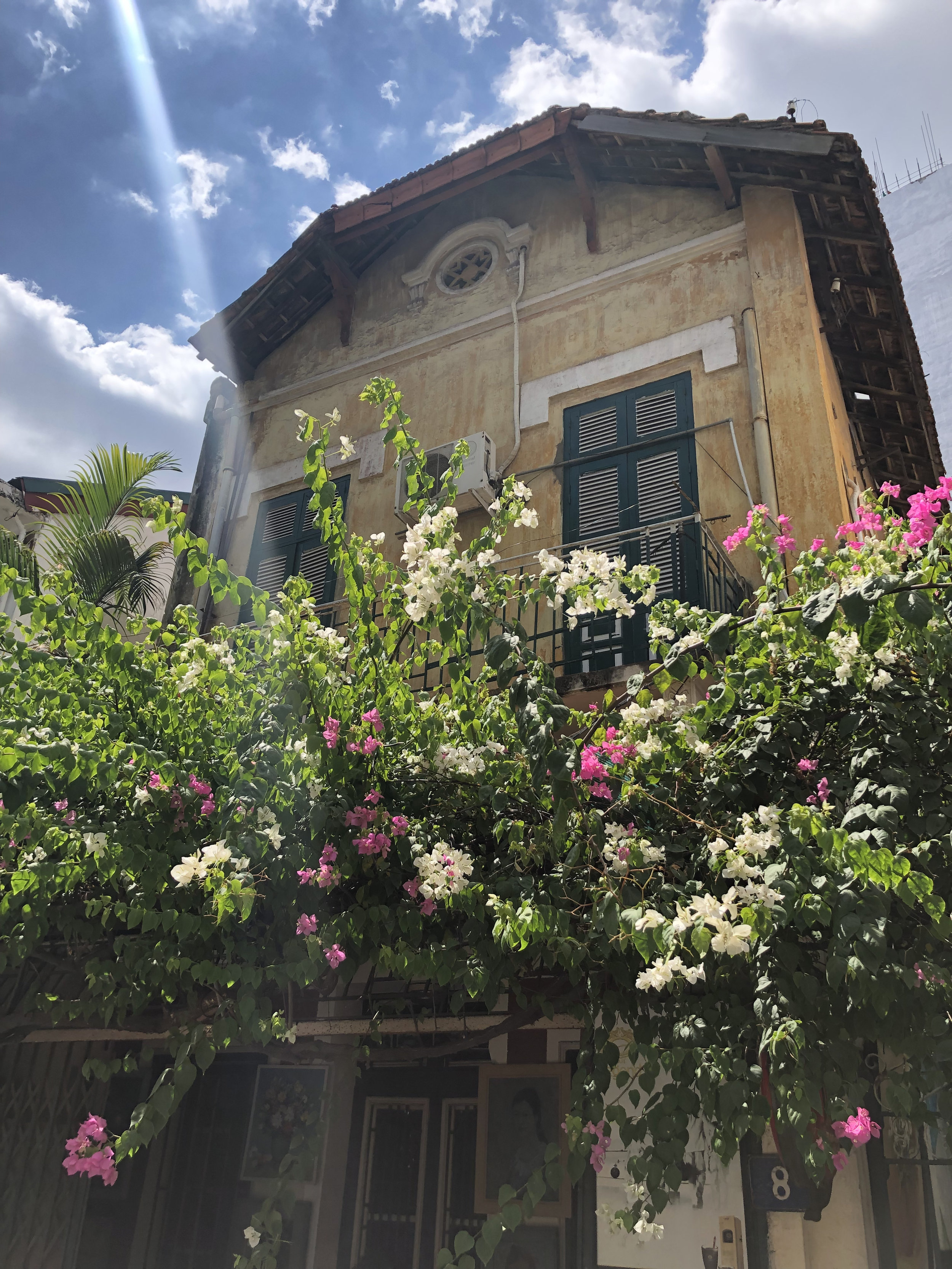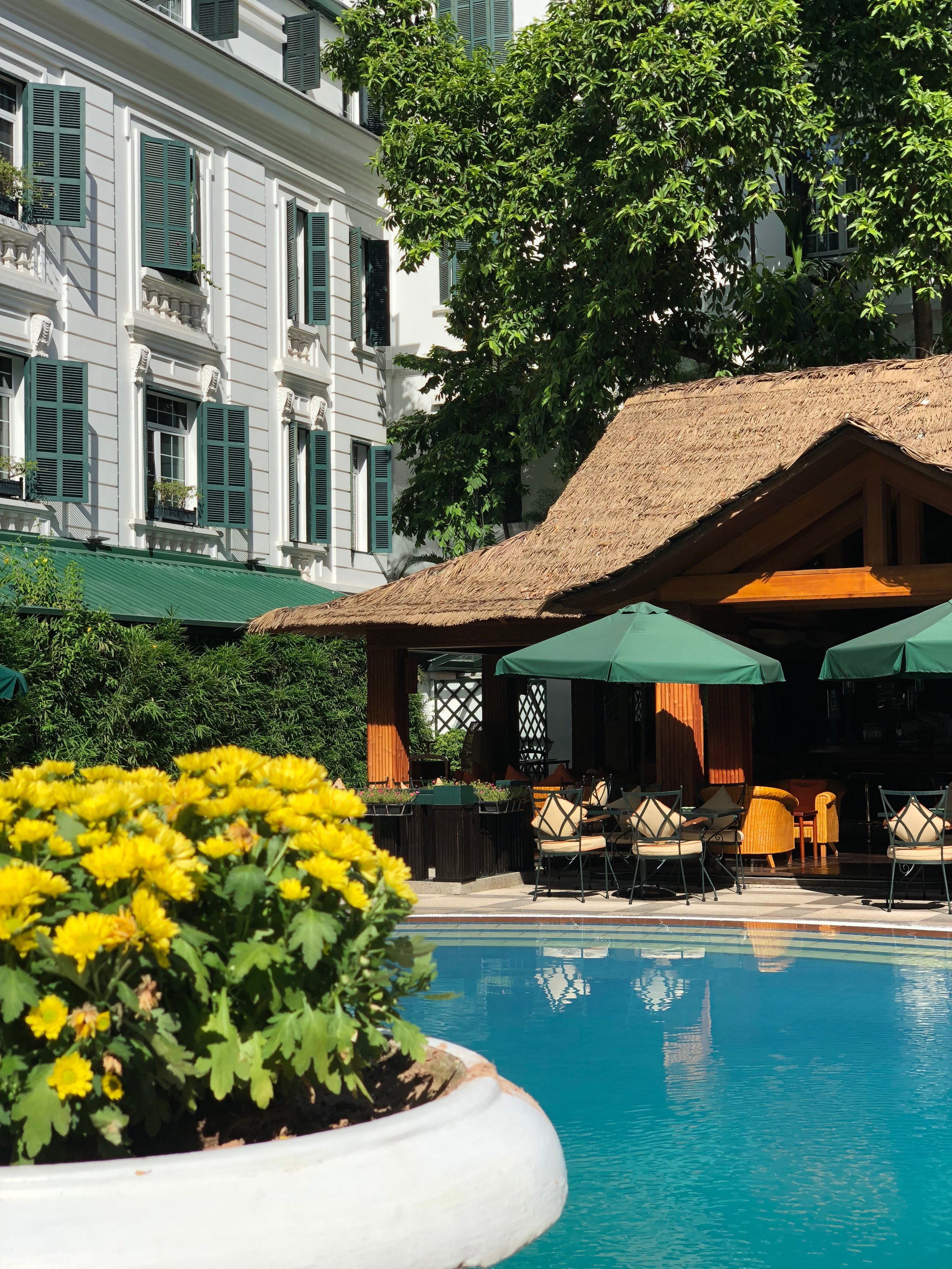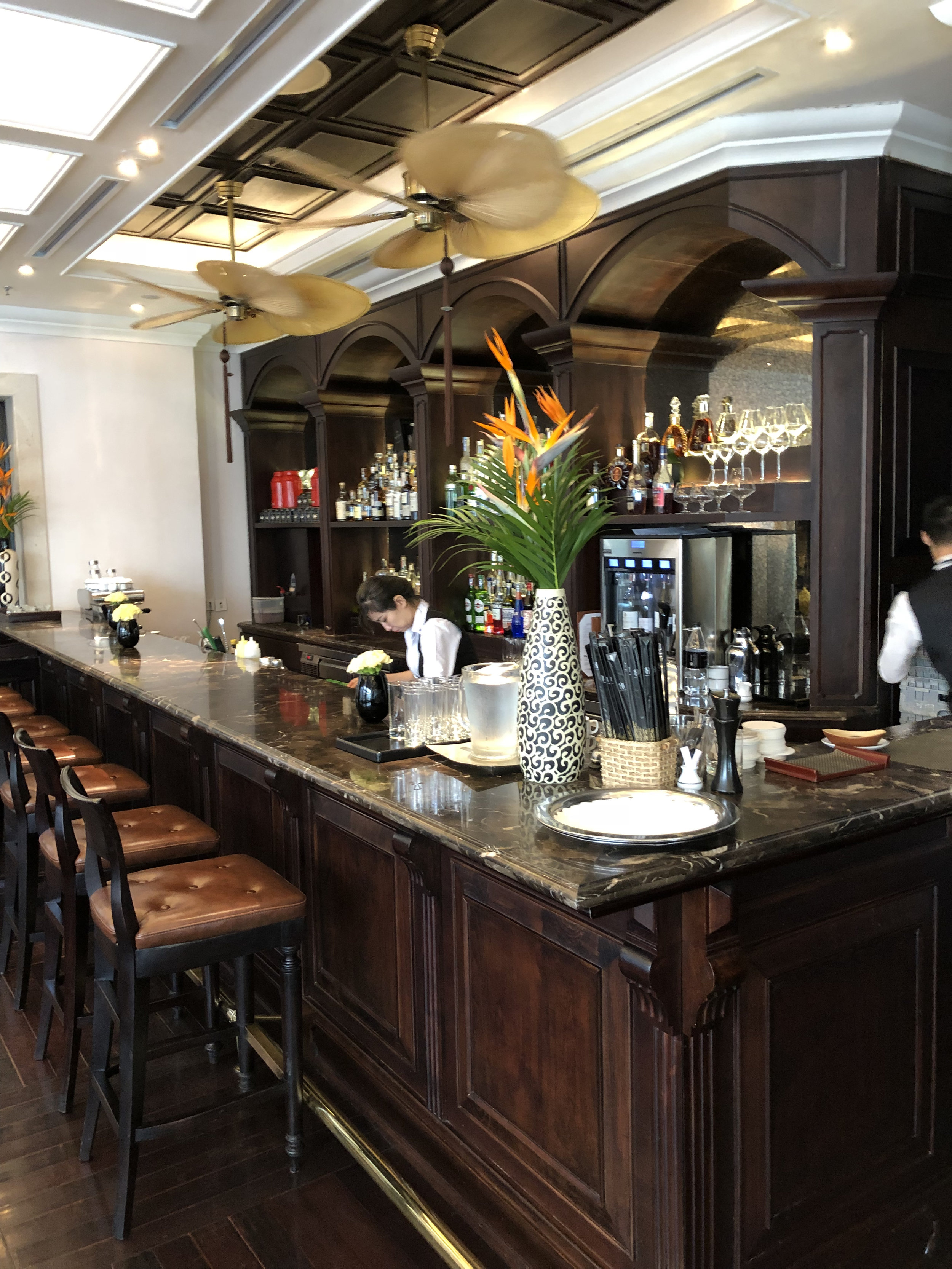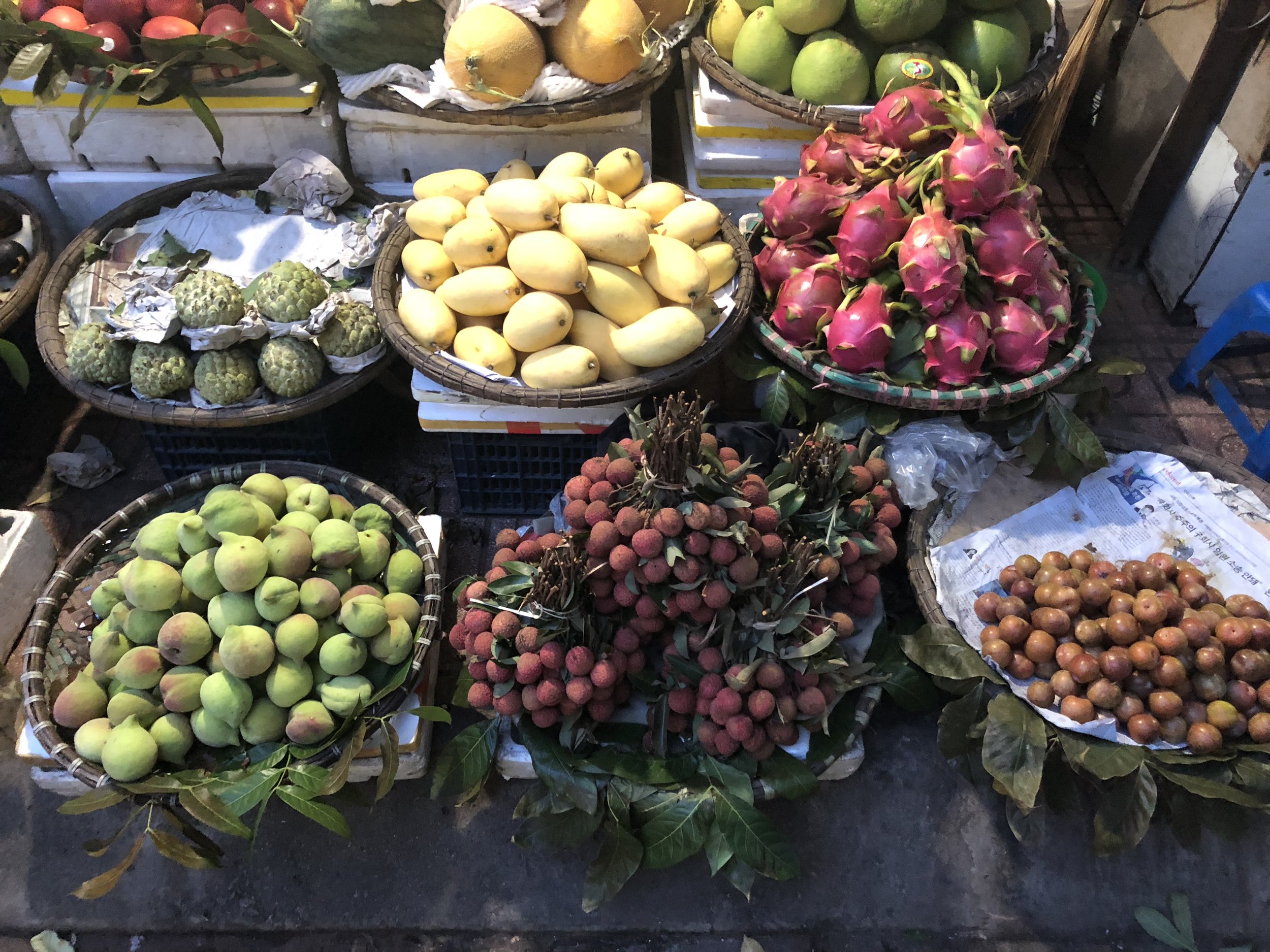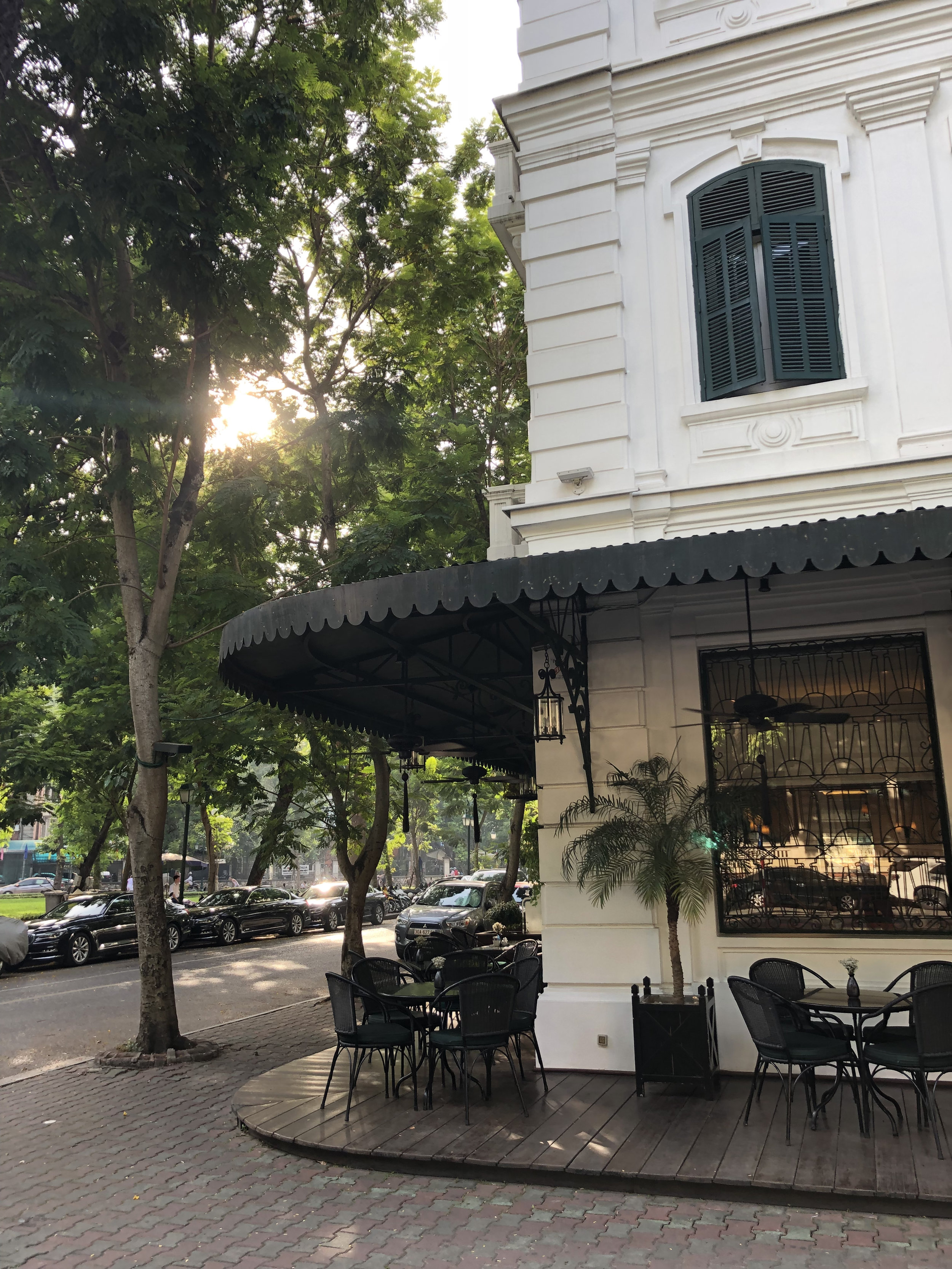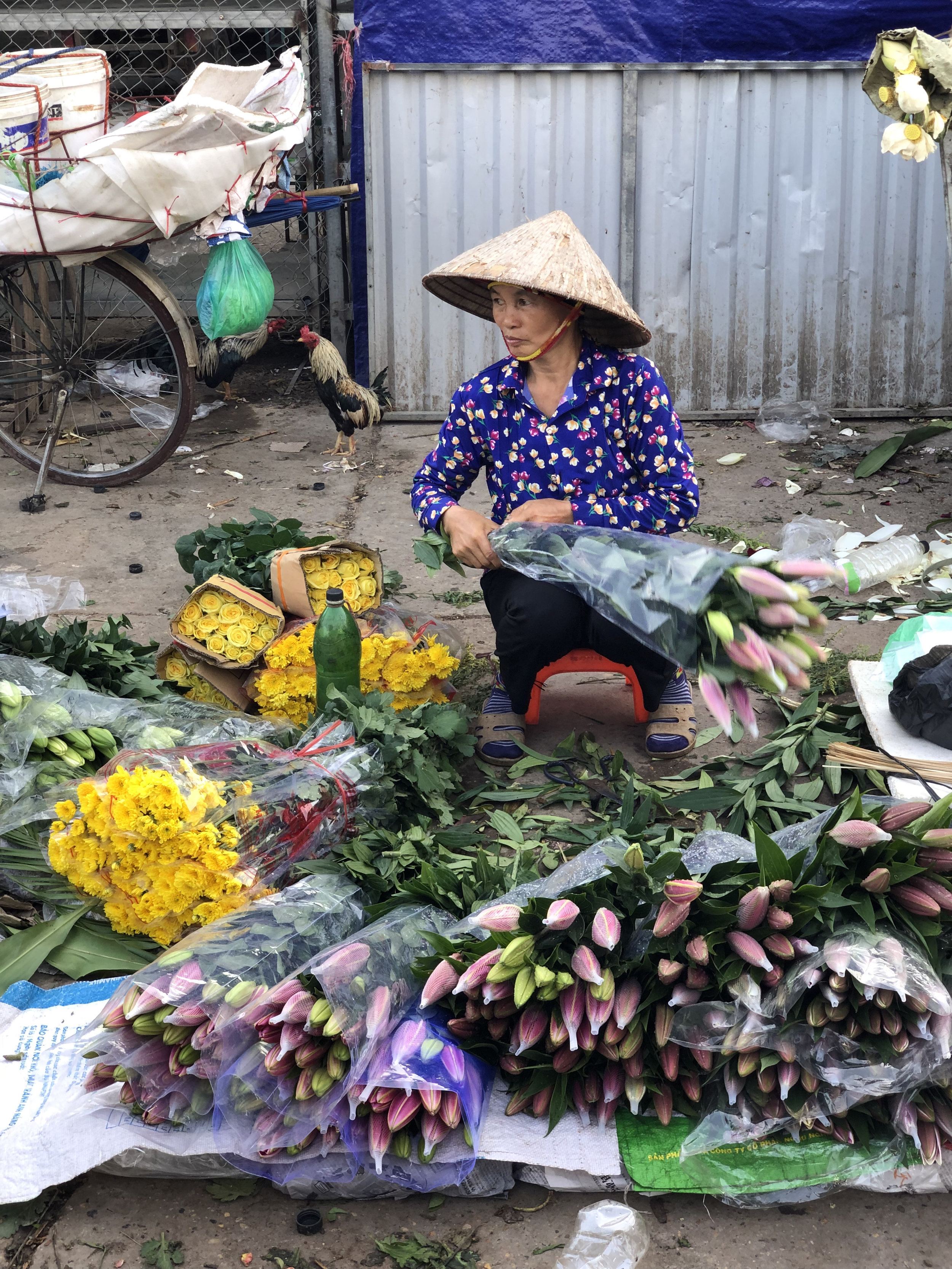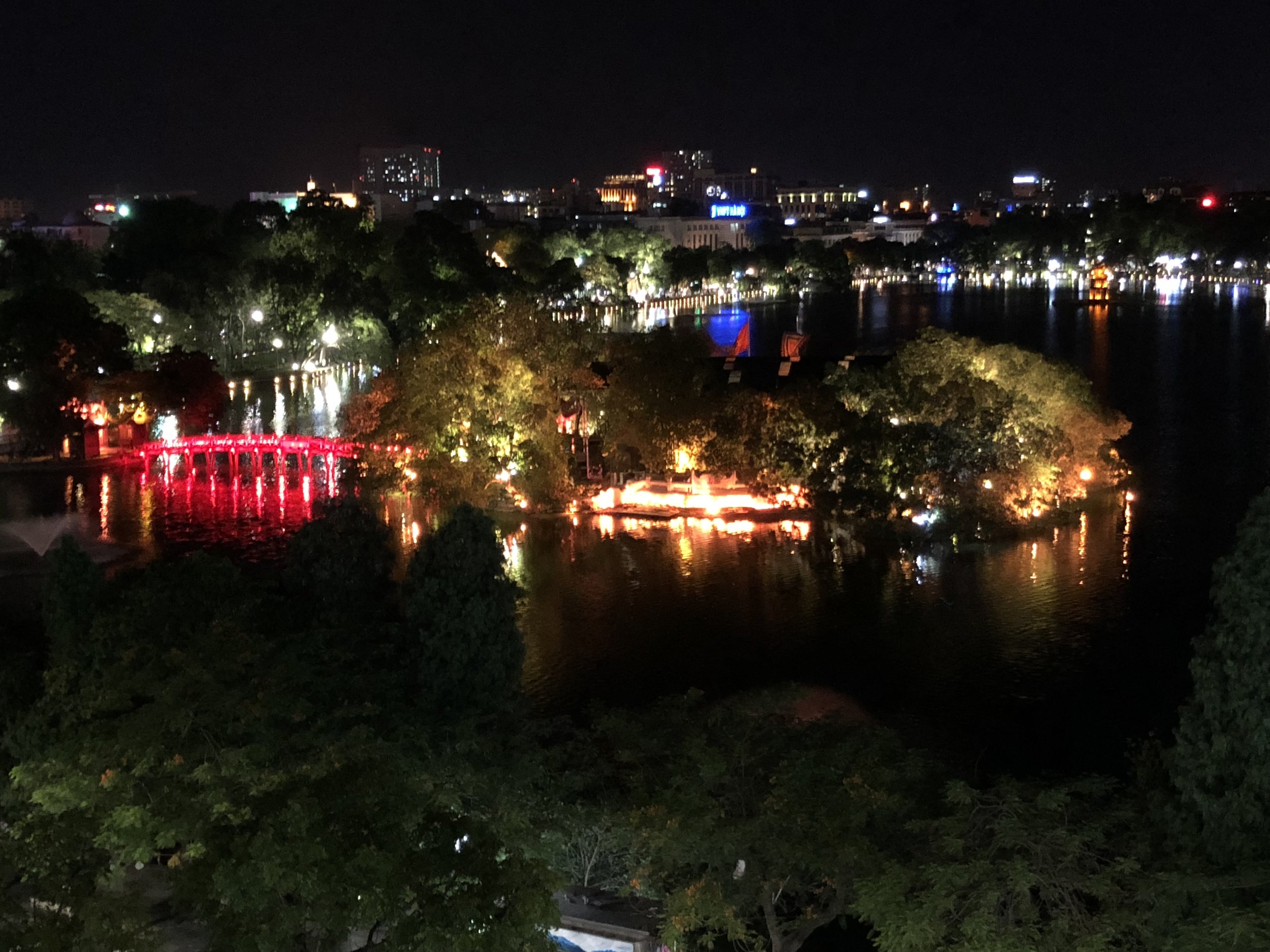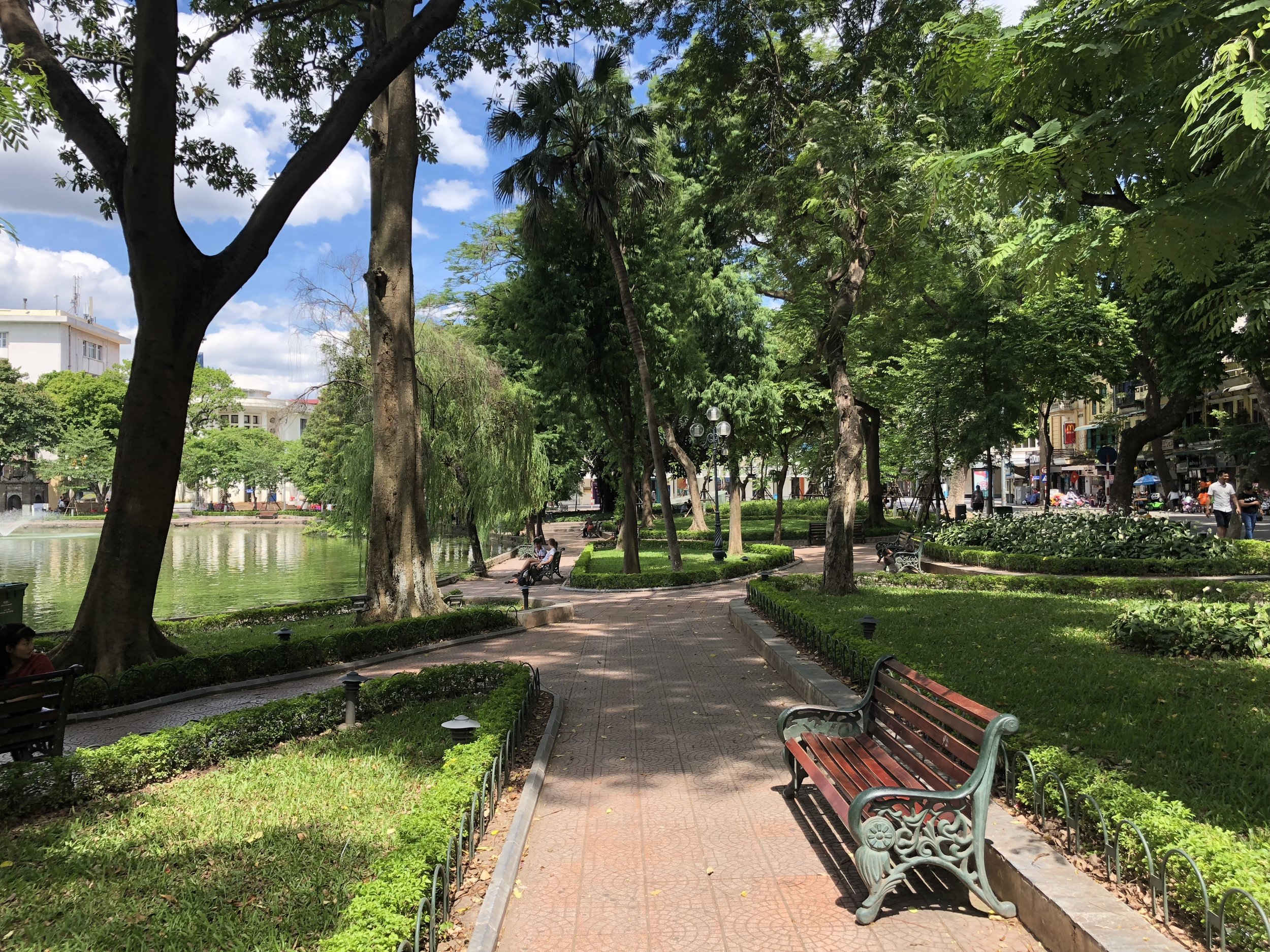Hanoi, Time and Again
Vietnam’s most romantic city looks to the future with a new generation’s embrace of the past
From Condé Nast Traveler, December 2018
Along the tranquil shoreline of Hanoi’s Truc Bach lake—where, half a century ago, John McCain was pulled from the water with his parachute—there’s a humble little restaurant that McCain himself might have found amusing, if decidedly odd. State-Run Food Shop #37”is an homage to the postwar bao cấp era (1976-86), a period of scarcity and unspeakable hardship in Vietnam. Not a time you’d imagine looking back on with any longing, but here it is—all beer-clinking bonhomie, perpetually jammed with Hanoians young and old. With its vintage tube TV set, oil lamps, Soviet-made fans, and Communist propaganda posters, the interior evokes a government-issue canteen from the ‘70s, back when private restaurants with actual names were outlawed.
State-Run is the brainchild of Dặng Thanh Thủy, 46, who, in a previous life, was the founder of Vietnam’s leading fashion magazine, Đẹp (beautiful), and who, in her bespoke silk tunic, still looks like she’s front and center at a runway show. (She has two full-time tailors on her payroll.)
Thủy was raised by civil-servant parents in the Red River village of An Dương, at the nadir of the bao cấp era. As the only girl among five kids, Thủy was charged with cooking for the family: queueing up at dawn for their 16-kilogram monthly ration of rice; combing the riverbank for tiny shrimp and crabs when meat was scarce.
“These are the dishes of my childhood,” she says, pointing around the wooden table at our lunch order: a cozy bowl of pickled cabbage, wok-fried in pork fat; rau lang om mẻ (sweet potato leaves marinated with tangy fermented rice). Cơm cháy bò cay is a highlight: an inverted dome of golden-brown rice, with a socarrat-like crust that you shatter with a spoon, then dip the crunchy shards into an earthy beef stew.
The quintessential subsidy-era dish is mì nấu cà chua, or tomato noodle soup, which is basically a spicier, socialist riff on SpaghettiOs. Dishes like this hold deep sentimental value for Thủy and others of her generation—one thinks of the food critic in Ratatouille, swooning over his mother’s home cooking. If it all sounds like a theme restaurant, I suppose it is one (guests scribble their orders on yellow ration cards). But while the concept feels a bit too clever, the food is stupid delicious. And I’d never before seen middle-aged Vietnamese men murmur in pleasure over a pile of pickled cabbage.
I’ve been visiting Hanoi every few years since 1998, and its implausible beauty—or beautiful implausibility—still does something to the back of my neck. It remains, to my mind, the most romantic city in the Far East, the one Southeast Asian capital every traveler should visit, if for nothing but to rearrange old assumptions, and to reignite your spark for travel.
Hanoi also happens to be a perfect microcosm for the region—the timely, the timeless, the graceful, the infuriating, and the unfathomably delicious all in a single, compact, and (relatively) manageable city.
This being Asia, 20 years might as well be a century. Every time I return, some whole new suburb has sprung up, most recently Mỹ Đình, the “new economic center” of 30-story towers rising to the west. The endless green expanse of rice paddies that once framed the road in from the airport—furrowed by water buffalo yoked to wooden carts—has shrunk to a few token acres. As in other Asian capitals, Hanoi’s modern side keeps getting sleeker and more improbably luxe. Two decades ago all the global brands here were counterfeits—clothing shops touting “Bvlgaria” and “Amarni,” T-shirts emblazoned calvin cline. Now there’s a proper Cartier flagship at the Tràng Tiền Plaza mall. And if the store is mostly empty, at $90,000 a bracelet, I suppose all they need to sell is one.
Hanoi has always been more conservative than its southern rival—it’s the Boston to Saigon’s Miami, a city of poets and artists, academics, and other moody ruminants. (The winter mist lends itself to reverie.) For reasons both longstanding and recent—Hanoi’s proximity to China, the north’s enduring strain of Confucianism, and, of course, Saigon’s role in the American conflict—one cannot overstate the differences between the two. In cityscape and temperament, the capital leans more into tradition and history than its hypercharged counterpart.
“If Saigon is the American dream,” says Hanoi journalist Hoang Nga, “then Hanoi is the Asian dream. We’re more cautious, reserved, always one step behind—while Saigon is about running, running into the future.” That future, apparently, comes served in a zigzag-stemmed martini glass.
Hanoi’s embrace of the past has endeared it to Western visitors, who tend to prefer it to other Asian capitals—for its incense-shrouded temples, traditional shop houses, and elegant French Quarter villas. The city has done its best to oblige them, smartly packaging its sepia-toned nostalgia for foreign tourists. (Look no further than the 1952 Citroëns parked outside the Sofitel Legend Metropole hotel.)
The difference, now, is that young Hanoians—who came of age after Vietnam’s 1990s global awakening—have likewise fallen under the spell of that nostalgia and are laying claim to a past they weren’t even there for. State-Run Food Shop #37, the subsidy-era canteen, is just the foremost example of what could be termed a citywide restoration project.
“Until recently, no one under 50 cared about antiques or reclaimed furniture or old textiles,” says my Vietnamese-Australian friend Vy, who grew up in Sydney and moved back to Hanoi a decade ago. “In the trendier spots, everything was sparkly and polished, like Singapore.” That’s still largely the case, but the new generation is finding novel allure in the aged, the well-worn, the handmade.
You see it in wabi-sabi cafés like the Little Plan, where kids sip flat whites from the same chipped enamel mugs their grandparents once filled with lotus-petal tea. You see it in the concept store Hoang Nga runs with her husband, Tran Liem—aptly named Collective Memory—where vintage prints, wood-fired ceramics, and hand-dyed tribal scarves (all produced in Vietnam) are displayed on rustic tables. You see it in the curious proliferation of 1960s reel-to-reel tape players that now adorn every cool bar and restaurant. (Where did they find them all? Why don’t I have one?)
Chefs, too, are sifting through the past for inspiration. At the superb new restaurant Hàng Sơn 1871, Nguyễn Phương Hải—a sixth-generation Hanoian whose great-grandmother was herself a legendary cook—is rescuing forgotten recipes of the north, including a historically correct (and magnificent) rendition of Hanoi’s beloved chả cá: fish fried with dill and turmeric, served in the skillet on a tabletop ceramic brazier.
Everywhere you look, it seems, young Hanoians are digging through the proverbial attic. Artists are reviving lost forms like puppetry and paper making. Fashion houses are fusing traditional textiles and handmade Hmong embroidery to contemporary silhouettes. And is it any surprise that secondhand clothing is suddenly all the rage? One can understand the motivation. For Hanoians born after the war—as a majority now were—a reel-to-reel player is as exotic as a spinning wheel; a typewriter might as well be a loom.
Among young and old alike, the past 30 years must have felt like a mad dash out of history, with little time to look back. Now many are glancing over their shoulders to wonder what was left behind. “A lot of things, we’ve already lost,” says Nga. “We run too fast and too far.”
I’m reminded of my first visit here, in 1998, and the immortal advice of the motorbike-rental guy. I’d noticed my bike was missing a rearview mirror, and he just laughed. “What happens behind you, not your problem!” he said. Nobody looks backward in Hanoi traffic.
“You’ve essentially got a new generation who are saying, ‘Wait, there’s something more,’” says Sophie Hughes, a British expat who leads tours of Hanoi’s contemporary art scene. She, too, has noticed, among young Vietnamese, “this fascination for anything old and before their time.”
Part of this is a symptom of the digital age, where everything—and every era—is readily available and ripe for rediscovery. “The new generation has access that their parents never had,” Sophie notes. “When they look back at their history, they can really assess it, and question what actually happened. There’s a genuine curiosity about whatever came before.”
We happen to be sitting at an outpost of Cộng Càphê, a wildly popular chain of coffee bars designed around (no joke) a Viet Cong motif. Military-issue rubber sandals and 1960s Russian textbooks line the shelves above us; the staff wear khaki-green camo and peak caps adorned with red stars. Everyone around us is under 25. The coconut-coffee shake is ridiculously good.
“Of course, any generation is obsessed with old stuff,” Sophie says. But there’s a deeper impulse behind these restless excavations. In a country where national pride often feels obligatory and imposed from above—holding little weight among the post-’75 generation—young people are casting back to define, on their terms, what it means to be Vietnamese now. “In a way, it’s a new form of nationalism,” Sophie says, “but a nationalism that’s self-chosen.”
Sophie moved to Vietnam nine years ago, to manage the renowned Saigon art space Galerie Quynh. “When I first arrived, I met a lot of artists who were my age, and you know how hospitable Vietnamese are—they’d invite me to their homes, and I’d meet their parents and grandparents, many of whom were artists as well,” she recalls. “It struck me that, across three or four generations, you could trace Vietnam’s entire modern history.” That’s when she lit on the idea of telling the country’s political and cultural story through art. She now runs tours in Hanoi, Hue, and Saigon, taking collectors and curious tourists inside private galleries and studios.
While Saigon has made gains of late, with splashy openings like the Factory Contemporary Arts Centre (a massive exhibition and cultural space), Hanoi remains the heart and soul of Vietnam’s art scene. This is where it all began anew, in the early 1990s, when local collectives like the Gang of Five began pulling the capital’s stodgy Beaux Arts traditions into a new millennium, and onto the global stage.
But if previous generations looked outward and overseas for inspiration, Hanoi’s new wave is gazing inward. Take, for instance, Zenei, a crew of Hanoi-based artists who set out to rescue a thousand-year-old form of Vietnamese written language—now nearly extinct—called Nom. (Traditional Nom script was phased out during the colonial era, and officially replaced by the Latin alphabet in 1945; today, only a handful of scholars can read or write in the original language, including the five members of Zenei.) By incorporating Nom script into playful, abstract artworks and performances, the Zenei group have sparked new interest in study of the form.
Consider, too, the work of designer Vũ Thảo, 40, whose slow-fashion label, Kilomet109, is a collaboration with artisans from Vietnam’s 54 tribes: ethnic-minority communities whose traditional dyeing, weaving, and embroidery techniques are, like Nom script, at risk of disappearing.
Having grown up in the bao cấp era, Thảo remembers a time when clothing and fabrics were both in short supply, and nearly all produced domestically, mostly by hand, in small workshops and artisan villages. In their rural hamlet of Thái Bình, southeast of Hanoi, Thảo and her sister learned to sew their own clothes, and to appreciate the intrinsic value of the materials and their craft. Years later, she would put those skills to use, making baby clothes for her newborn son. By then she’d embarked on a career in journalism but was inspired to go back to school, at the Hanoi outpost of the London College for Fashion Studies.
The curriculum, she soon realized, was almost identical to the original in London. “We studied Western fashion—twenties flappers, fifties rock-and- roll, denim, punk. It wasn’t our culture at all,” Thảo recalls. “Yet we have so much. The 54 tribes alone! Each group has a huge, deep history, and all these distinctive techniques. But no one was really looking at that back then.”
Thảo, by contrast, began using those traditional elements in her own designs. In 2012, she launched Kilomet109 (a reference to the distance between Hanoi and her hometown). The hope was to raise the profile—and the perceived value—of so-called ethnic techniques and clothing designs.
While other fashion brands may play up their connections to hill-tribe artisans, Thảo’s is a genuine cooperative. The work is carried out by 30 artisans from four ethnic groups, scattered across North Vietnam (Thảo spends a third of her year in the villages). Nearly all of her clothing is sustainably and organically produced, making use of age-old methods: applying beeswax to garments for a subtle sheen; harvesting indigo from Kilomet109’s own plantation to create brilliant-blue tunics and elegant quilted jackets.
“A lot of Vietnamese, they’re easily seduced by mass-production clothing,” Thảo says. “Young people see big brands and think that’s our future. We’re supposed to be ‘global citizens,’ you know?” For this reason, Vietnam’s garment industry is under tremendous cultural pressure, not just economic. “We still do manufacturing in Vietnam—for Adidas, Zara, H&M—but it’s almost entirely for export, for the international market,” she says. “So you see a lot of ‘Made in Vietnam,’ but not ‘Made for Vietnam.’ ”
Meanwhile, Thảo has noticed—among designers, fashion students, and consumers alike—a heightened interest and palpable excitement about traditional techniques and handcrafted design. “I don’t think it’s just a trendy thing,” she adds. “Now it’s more like a movement. People are realizing the impact of keeping the old ways alive—whether it’s economic, cultural, or environmental. And right now, Vietnam is really at the forefront of that.” •
HANOI GUIDE
THE PLACE TO STAY
The Sofitel Legend Metropole is exactly what you came for: a 1901 landmark two blocks from Hoàn Kiếm Lake, with a savvy concierge staff, fantastic breakfasts, and colonial atmosphere to burn.
WHERE TO EAT & DRINK
Come to Hang Sơn 1871 for chef Nguyễn Phương Hải’s fantastic chả cá; stay for updated classics like crab vermicelli and bánh bột lọc Huế (pork- and-shrimp-filled tapioca dumplings). State-Run Food Shop #37channels a 1970s government- issue canteen, serving simple, craveable dishes (like spicy beef stew with crunchy rice) to an improbably stylish clientele. Longtime favorite Chim Sáo highlights the cuisine of Vietnam’s ethnic minorities—order grilled pigeon with sautéed young bamboo, garlicky molten eggplant, and lạp sườn (smoked pork sausage), and pair them with knockout rice wines. Ưu Đàm Chay is Hanoi’s hottest new restaurant, a stunning multistory villa with equally Instagrammable, Vietnamese-inflected vegetarian food. Three-year-old An Biên specializes in Haiphong-style seafood, like thick bánh da noodles in a rich crab-and-pork broth, or plump mantis shrimp to dunk in a bubbling hot pot. The all-day café Maison de Tết Décor occupies an ocher mansion on West Lake; go for sunset drinks on the balcony or Aussie-style breakfasts (grain bowls, eggs from the owners’ farm). Down a sleepy lane in Ba Đình, Reng Reng Cafe is a whisper-quiet, no-WiFi café that wouldn’t be out of place in Tokyo. You might wait 20 minutes for your ristretto (made with Arabica beans from Vietnam’s Central Highlands), but you’ll find no finer cup in town.
FINDING THE BEST STREET FOOD
Street food is more a sensibility than a strict definition: Many stalls now have indoor tables and air-conditioning, even if they still cook in curbside kitchens. Most vendors specialize in a single dish, prepared as it always was and ever shall be. Start your peregrinations at Bún Chả Đắc Kim, an Old Quarter institution since 1966. Bún chả is really several plates in one: smoky grilled pork belly, pork meatballs wrapped in fragrant wild betel leaf, and double-fried crab spring rolls, served with a tangle of rice vermicelli, fish-sauce dressing, and a heap of fresh herbs as big as your head. How you devour it all is up to you. At $4 an order, it’s the best bargain—and my favorite meal—in Hanoi. For your pho fix, hit the rough-and-tumble Phở Gia Truyền, where a giant cauldron of beef broth simmers up front. Join the regulars at communal tables, wordlessly slurping noodle soup from dawn till late morning (pho is a breakfast thing here). In an alleyway shaded by a weeping fig tree, Bún Cá Sâm Cây Si is known for delicious nem cá: deep-fried spring rolls filled with wood-ear mushrooms, minced pork, scallion, and tender fish. At the popular sandwich stall Bánh Mì 25, run by the affable Mr. Phuong, you order your banh mi at a sidewalk cart, then take it across the street to his open-air café, where you can get an avocado smoothie or fresh nước chanh leo (passion-fruit juice). Finally, bún riêu is Hanoi’s “other” noodle soup—a brighter, tangier counterpart to beef pho. Shot through with tamarind, tomato paste, and nutty annatto oil, the crimson broth at Bún Riêu 41 has amazing depth. Fill out your bowl with freshwater crab, snails, beef, and fried tofu, and you’ve got a nap in your future.
THE SHOPPING SCENE
Vũ Thảo’s slow-fashion brand, Kilomet109, applies traditional Vietnamese design techniques (natural dyes, hand-woven silks) to beautiful and clean-lined women’s and men’s clothing. Collective Memory has whimsically curated Vietnamese art, handicrafts, and artisanal products. If Hermès had a lacquerware boutique, it might look like Hanoia, with sleek, vibrantly colored pieces showcased in an elegant Old Quarter villa (there’s an outpost at the Metropole hotel). Tan My Design is Hanoi’s oldest embroidery shop and a favorite of local designers and expats, who come here for breezy women’s clothing, housewares, and soft bed linens from Catherine Denoual. Those same expats swear by the tailors at Hoa Fashion, up by West Lake, for expert copies of dresses, tops, pants, and jackets. Best to bring your own fabric; allow for two or three fittings.
WHAT ELSE TO SEE & DO
The American art expert Suzanne Lecht has lived in Hanoi since 1994, and her gallery, Art Vietnam, helped bring international acclaim to contemporary artists like the Gang of Five; her private home and collection are open to serious visitors by appointment. The charming gallery-café Manzi has become the art scene’s de facto hub, with rotating exhibits and regular salons. Sophie’s Art Tour is on hiatus while Sophie Hughes is on a research sabbatical, but should be up and running again in 2019 (check sophiesarttour.com). If you visit only one museum, make it the excellent Vietnamese Women’s Museum, for its powerful exhibit on the “long-hair army,” the women who helped win Vietnam’s independence and reunification. There’s also a floor dedicated to Vietnamese fashion, from hill-tribe costumes to contemporary couture.
—P.J.L.

